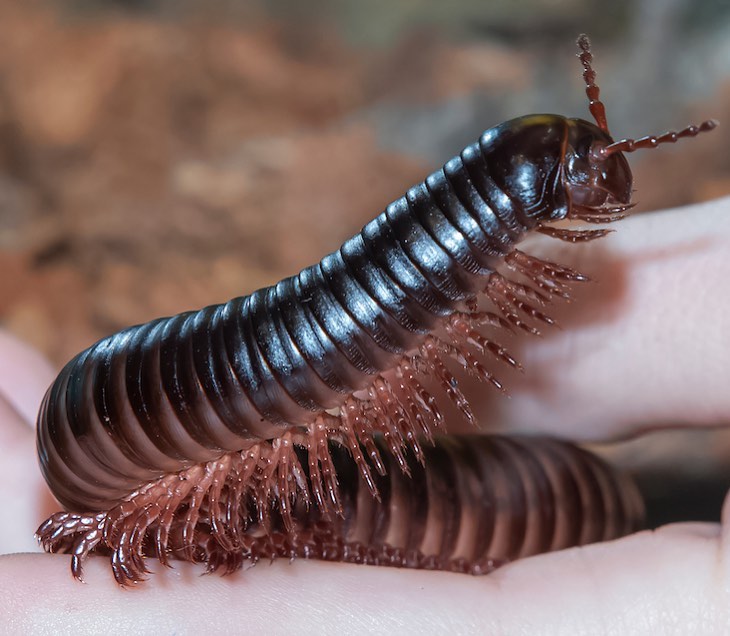Summary:
1. The millipede is a fascinating creature known for its many legs.
2. Contrary to popular belief, millipedes do not have a thousand legs.
3. The giant African millipede, despite its name, only has around 300 to 400 legs.
4. Millipedes play an important role in the ecosystem, contributing to soil health and decomposition.
5. Let’s explore these incredible arthropods’ unique characteristics and behaviors.
Now that’s a lot of legs! Did you know the name millipede means “thousand feet,” but the giant African millipede only has about 300 to 400 legs? 😱 These fascinating creatures have captivated the curiosity of many with their countless legs and distinct appearance. This article delves into millipedes, uncovering their unique characteristics, debunking common misconceptions, and exploring their crucial role in the ecosystem.
Millipedes, despite their name, do not possess a thousand legs. The idea of a millipede having a thousand legs is a popular misconception. The number of legs a millipede has varied depending on the species. While some species may have fewer than a hundred legs, others may have several hundred. The giant African millipede, one of the largest species, falls into the latter category, with a leg count ranging from 300 to 400.
The diversity among millipedes goes far beyond their leg count. These arthropods have a long, segmented body covered in a tough exoskeleton. Each segment typically bears two pairs of legs, except the first three segments and the last few segments. These legs allow millipedes to move with a characteristic wave-like motion, creating a mesmerizing sight as they explore their surroundings.
But what’s the purpose of having so many legs? Millipedes, their numerous limbs serve several essential functions. Firstly, the legs aid in locomotion, allowing them to navigate their environment efficiently. Their synchronized wave-like motion enables them to crawl across various terrains, from the forest floor to decaying logs or leaf litter.
In addition to locomotion, millipede legs are crucial in their lives. They use their legs to navigate their food sources, which mainly consist of decomposing organic matter such as fallen leaves, plant material, and dead animals. Millipedes have specialized mouthparts that allow them to chew through these decaying substances, contributing to decomposition and nutrient cycling in the ecosystem.
Millipedes also rely on their legs for defense. When threatened, they can curl their bodies into a tight spiral and tuck their delicate legs safely inside, forming a protective barrier. Some species even have chemical defense mechanisms, where they excrete toxins from glands located on certain body segments. These toxins act as a deterrent to predators and help ensure the millipede’s survival.
Interestingly, millipedes are not equipped with great speed or agility. They are generally slow-moving creatures, taking their time to traverse their surroundings. This characteristic and its defensive mechanisms serve as a passive form of protection. Millipedes evade potential predators by being inconspicuous and armed with toxins, relying on camouflage and warning colors to fend off threats.
Millipedes come in a wide variety of shapes, sizes, and colors. Some species are relatively small, measuring only a few centimeters in length, while others, like the giant African millipede, can reach lengths of over 30 centimeters. Their vibrant colors range from earthy browns and greens to striking yellows and reds, showcasing the incredible diversity within the millipede family.
Despite their unique characteristics and colorful appearances, millipedes often remain hidden from plain sight. They are predominantly nocturnal creatures, preferring the cover and darkness of night to venture out and explore their surroundings. This nocturnal behavior adds an air of mystery to their already captivating nature, leaving us enchanted by their world.
Now that we’ve uncovered some of the fascinating aspects of millipedes, it’s clear that these remarkable creatures deserve our attention and appreciation. From their mesmerizing motion to their essential role in the ecosystem, millipedes showcase the incredible wonders of the natural world. So, the next time you come across a millipede, take a moment to observe its intricate legs and appreciate the beauty that lies in its diversity and purpose.
*****
Source Description
Now that’s a lot of legs! Did you know millipede means “thousand feet,” but the giant African millipede only has about 300 to 400 legs? 😱

